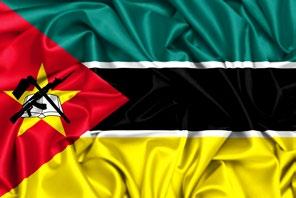
15 minute read
Mozambique
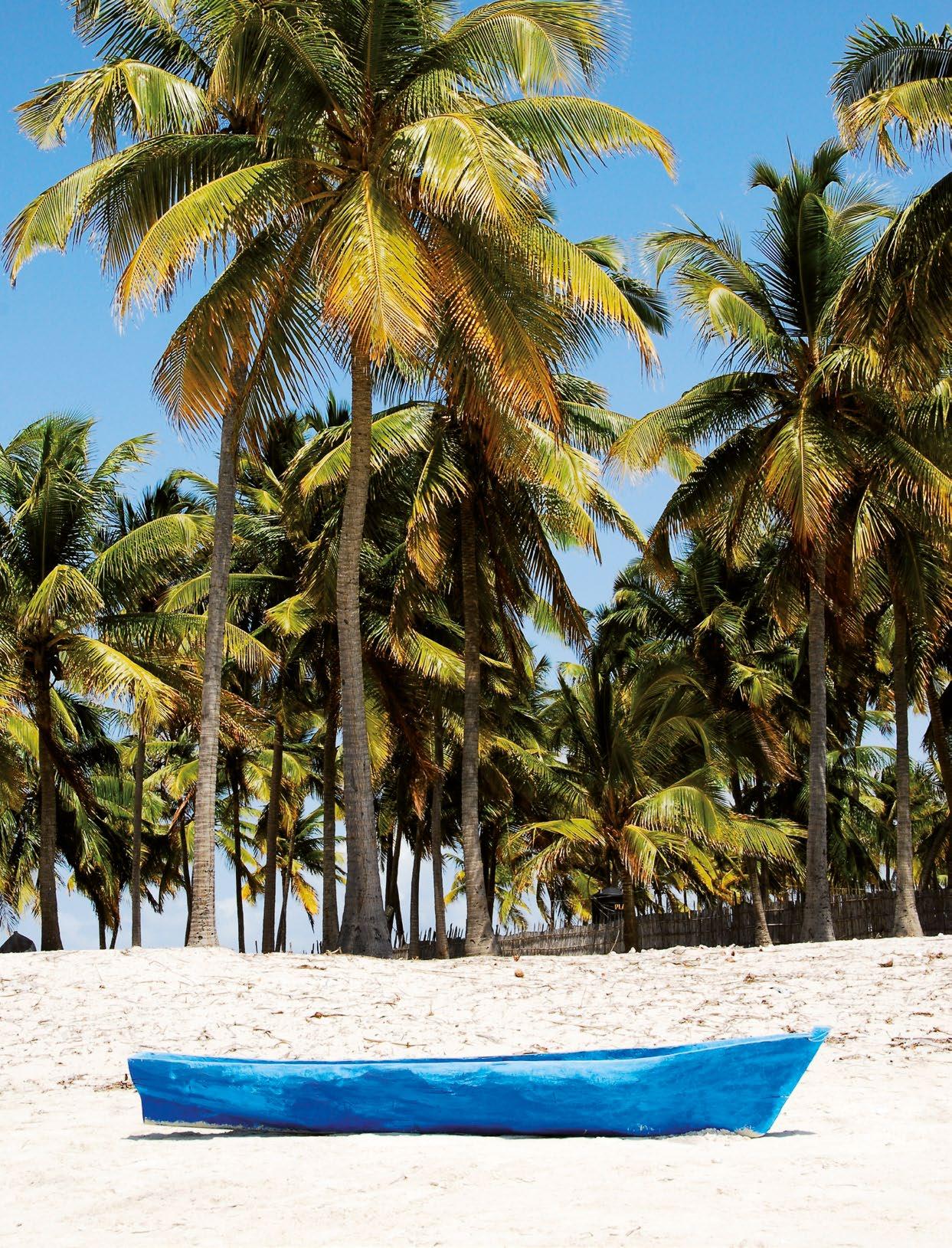
The Republic of Mozambique, located in southern
Advertisement
Africa, is bordered by the Indian Ocean to the east, Tanzania to the north, Malawi and Zambia to the northwest, Zimbabwe to the west and eSwatini (Swaziland) and South Africa to the southwest.
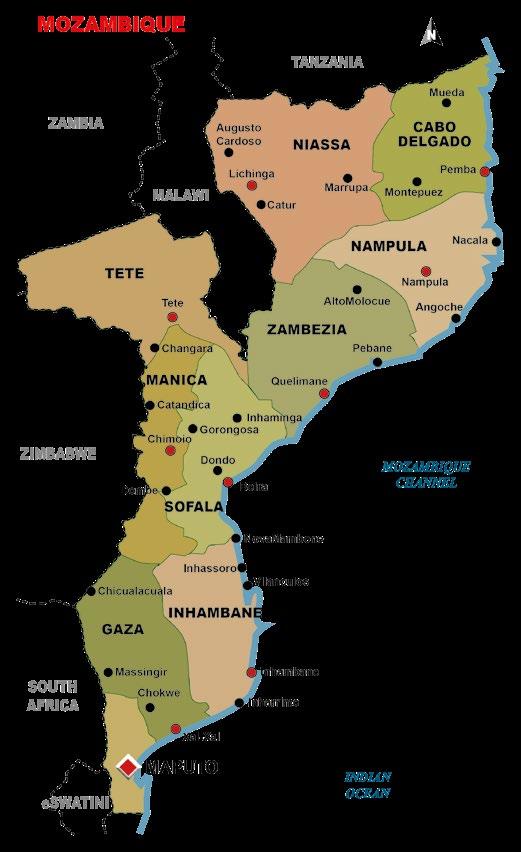
This sovereign state is separated from the Comoros, Mayotte, and Madagascar by the Mozambique Channel to the east.
The only official language of the country is Portuguese, but generally, English is spoken in hotels and lodges. Mozambique boasts a land area of 801 590km² and a south-eastern coastline of 2 500km. With a total population of 31 million, its biggest city is Maputo with a population of 1.1 million. Founded as a port town by the Portuguese, the influence of travellers and traders from Africa, Asia, and Europe, has made the city a diverse and lively metropolis. The area is famous for its prawns in peri-peri sauce, a spicy concoction made from an especially hot African chilli pepper.
Mozambique is a tropical paradise travel destination, with pristine shores and remote islands for the ultimate beach vacation and characterized by its tropical nature. ♦
Pristine BENGUERRA ISLAND

by Gavin Louw, Azura Retreats.
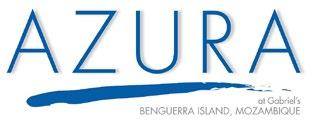
Azura Retreats is owned by Stella & Christopher Bettany. Azura Benguerra Island is managed by Jeni Grinaker & Peter Siebert.
Benguerra Island in Mozambique is the
second largest island in the Bazaruto Archipelago, which broke away from the mainland thousands of years ago. The island is approximately 55 square kilometres (11km long and 5.5km wide) and lies 14km offshore. Portuguese explorers also gave the island the name Santa Antonio.
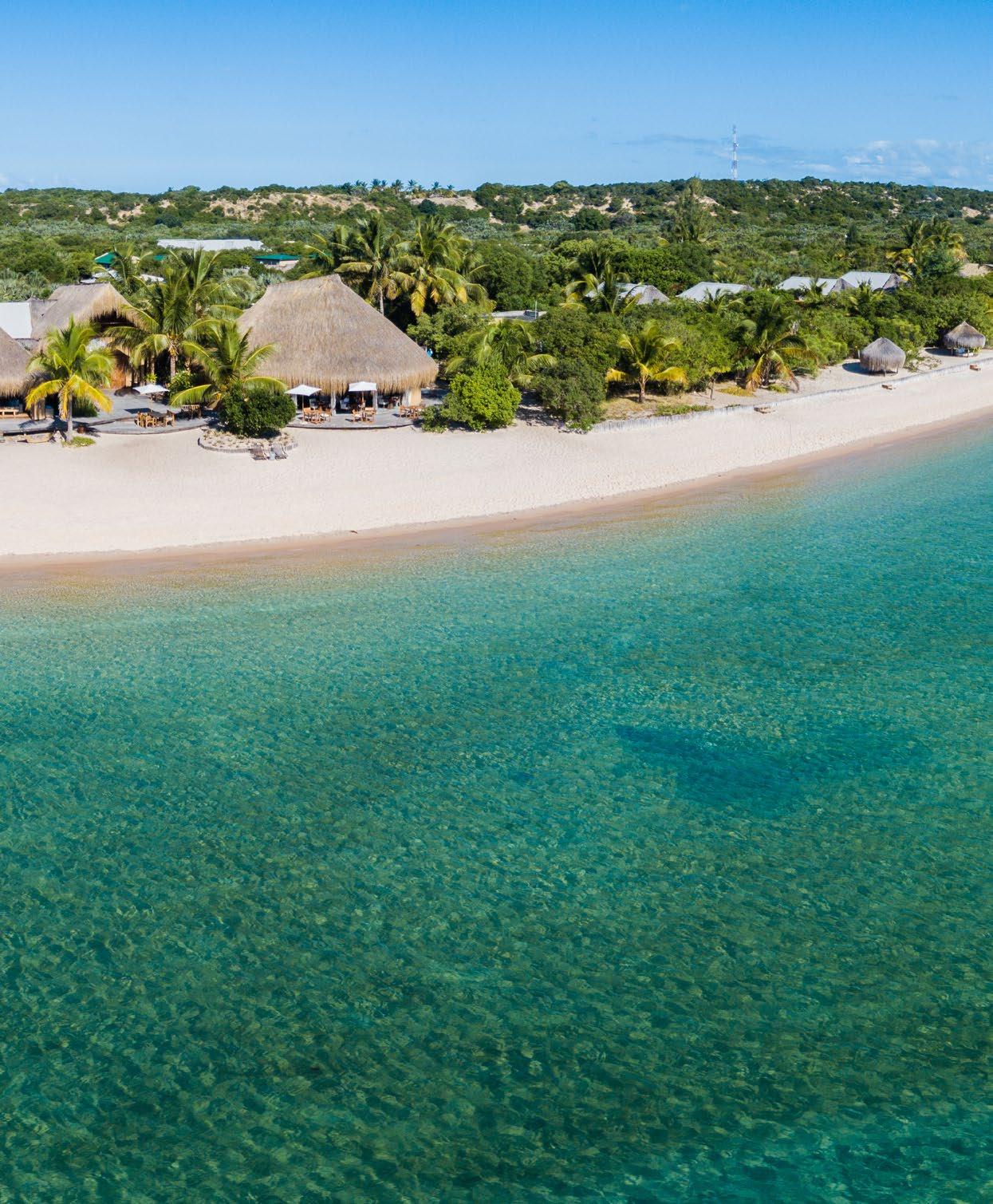
Famous for its unspoiled white beaches, dive sites, luxury resorts, horseback riding and fishing.
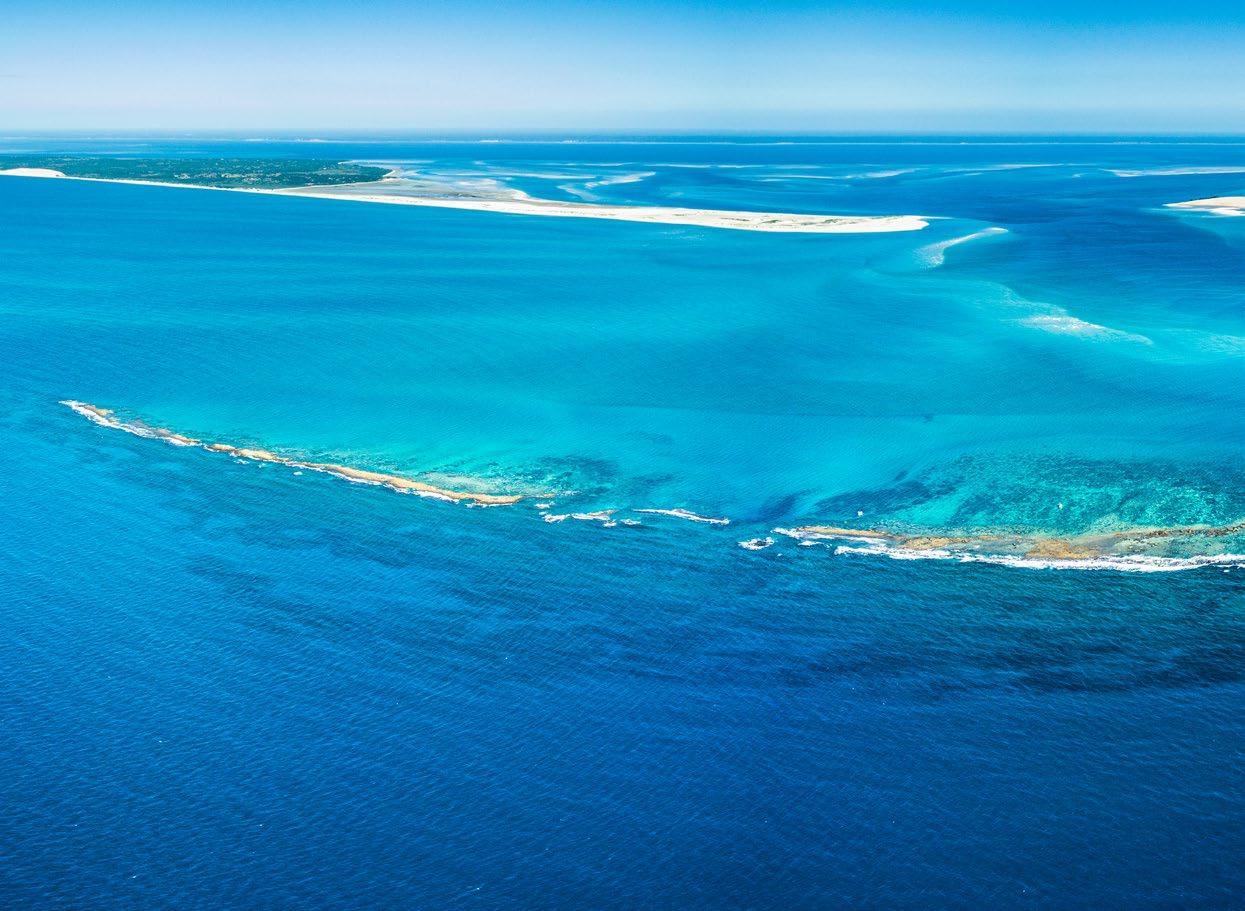
Greater flamingo (Phoenicopterus roseus). Photo © Andre Klopper
The island, which is home to approximately 140 bird species, was declared a national park in 1971.
Benguerra Island comprises forest, savannah, freshwater lakes, and wetland ecosystems that sustain a diverse population of fauna and flora. Fresh water crocodiles can be found in the three lakes, bearing testimony to the island's mainland past.
The Bazaruto Archipelago is made up of several idyllic tropical islands. It has become known as one of the most romantic island getaways in the Indian Ocean and was recently voted as the number one Indian Ocean island to experience.
Imagine staying in one of the world’s most undiscovered, pristine environments, private and removed from the rest of the world. Where authenticity of the experience, without compromising on standards, is the key. Where there is a philanthropic goal of both protecting the environment and giving back to the local community.

Dhow or traditional fishing sailing boat. Photo © Jaco van Rensburg
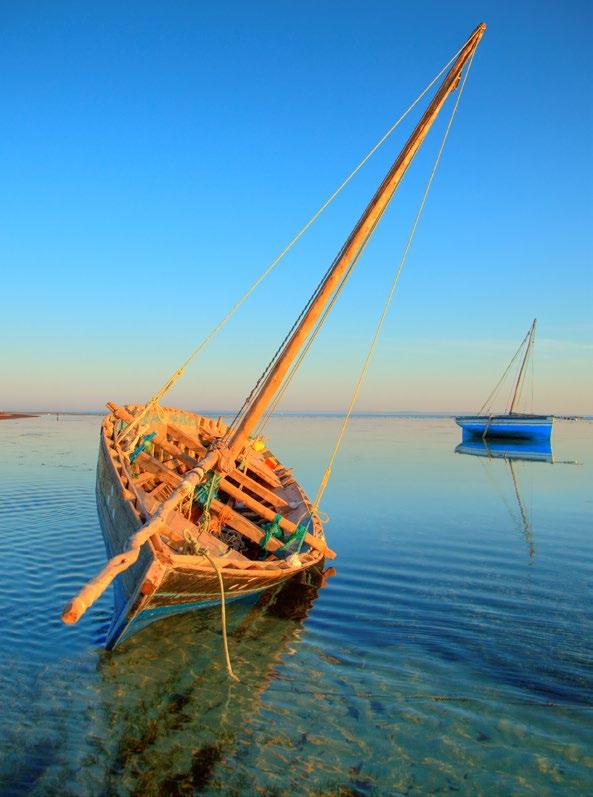
Benguerra Island lies 14km north east of Vilanculos, the nearest town and site of the international airport. There are flights on Airlink and LAM from Johannesburg International Airport (OR Tambo) to the newly modernised Vilankulo International Airport (VNX). There is a stateof-the-art helicopter operated by Archipelago Charters for the transfers from Vilanculos to Benguerra Island.
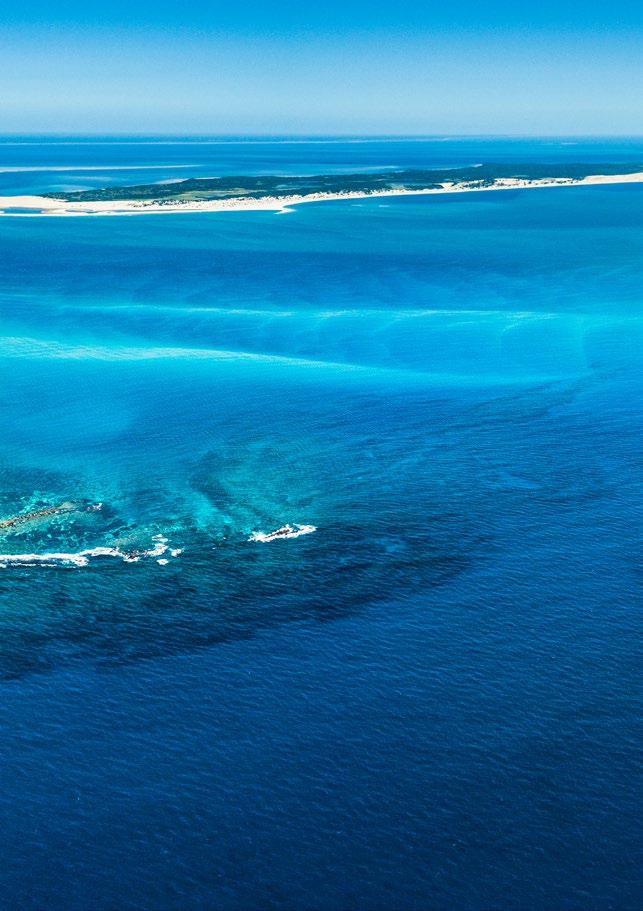

Azura’s signature activity - a short hop to Bazaruto Island to hike up Bazaruto Dune for unsurpassed 360-degree panoramic views of the Archipelago.
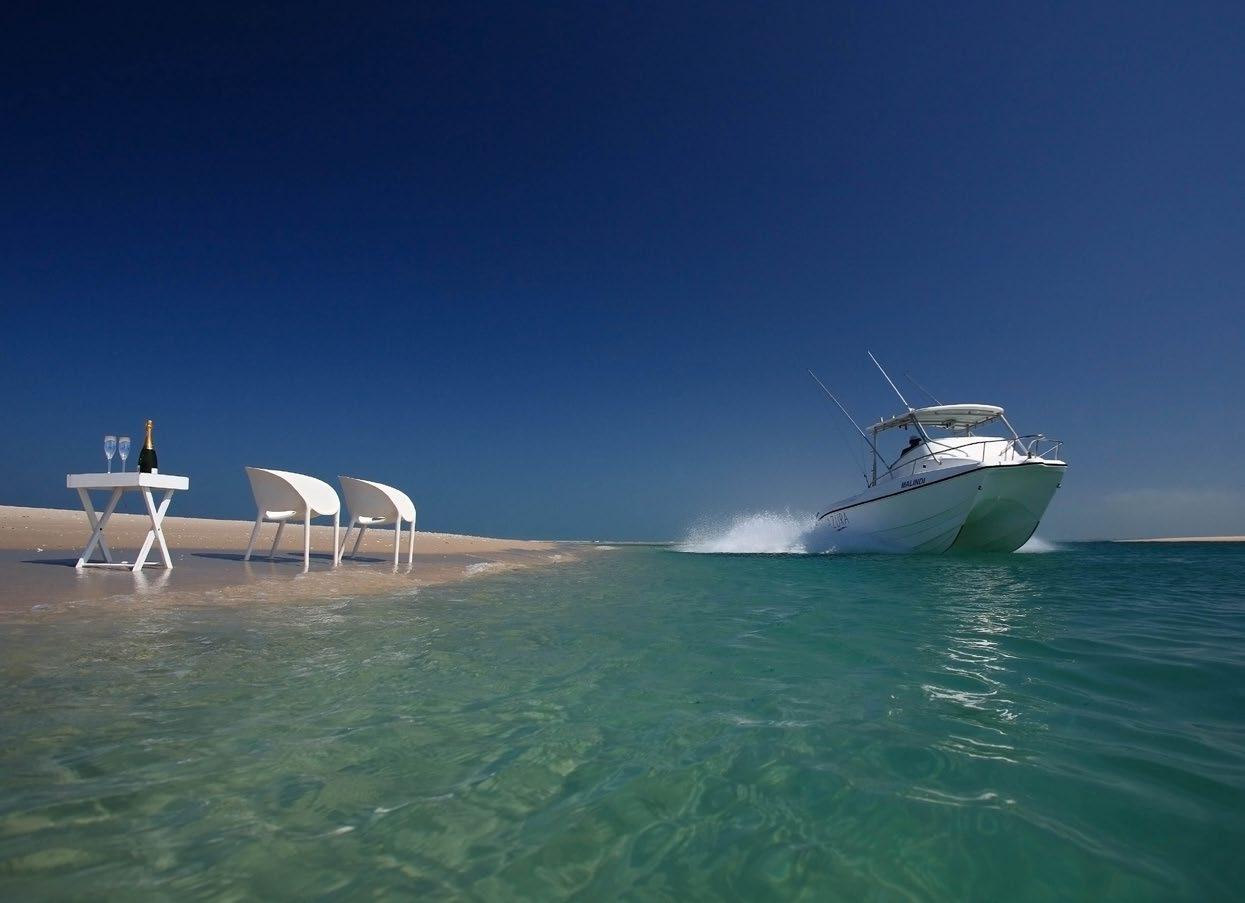
Scan the QR code or visit https://youtu.be/VszOGha3YdA to watch the video: ‘Azura Retreats: Azura Benguerra Island’.
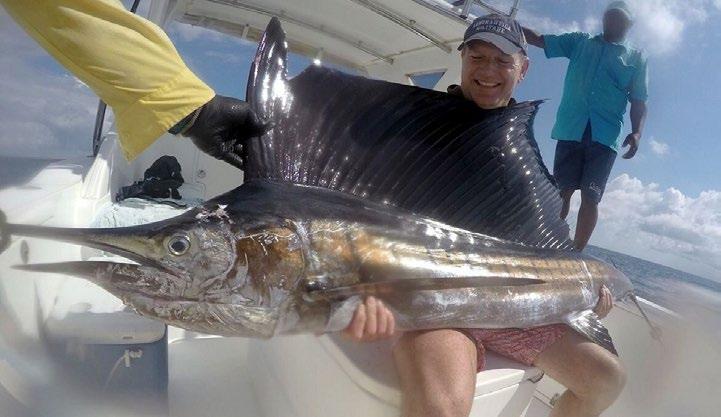
The Bazaruto Archipelago has some of the best big game, reef and bill fishing in the Indian Ocean.
Privately owned and managed, Azura Benguerra lies on the western side of the unspoilt Benguerra Island within a marine national park of the Bazaruto Archipelago. The award winning unspoilt Azura Benguerra Island offers deserted beaches of pure white sand that extends for miles, sparkling turquoise seas criss-crossed by local dhows plying their trade, sunny days, and star-studded nights.
This is the enchanting island escape you always imagined.
Azura Benguerra, the first eco-friendly resort in Mozambique, was hand-built by the local community and is operated in partnership with them.
The first eco-friendly resort in Mozambique.
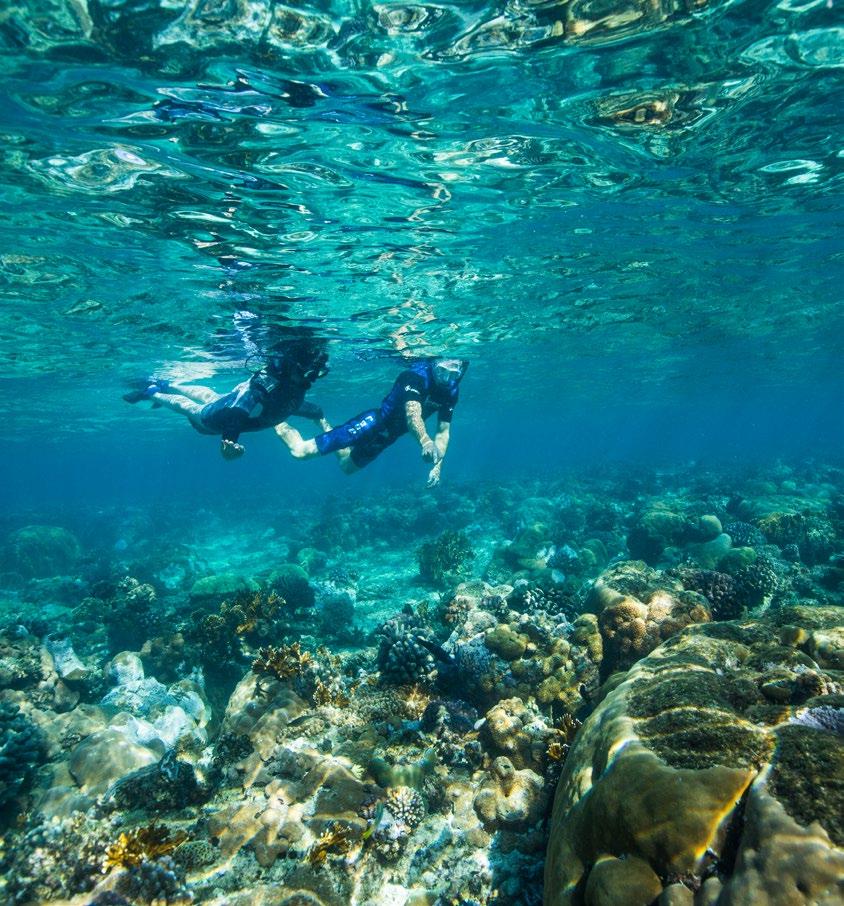
At Azura Benguerra guests spend sundrenched days fishing, snorkelling, or diving protected reefs, watching migrating whales and dolphins that ply these waters. Azura Benguerra is right on the beach and open to the sea.
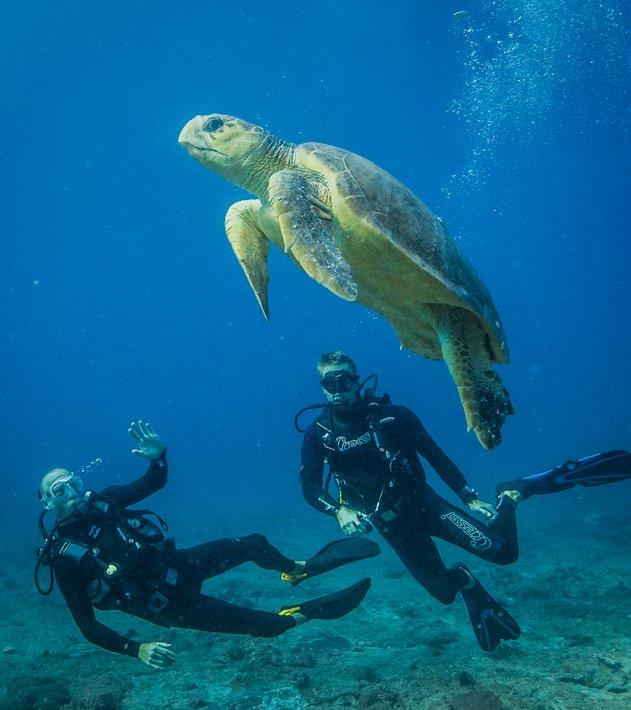

Marine life and corals are often cited as the best off the East Coast of Africa. Azura has a PADI 5 Star Dive Centre with top of the range Scubapro equipment.
Breakfast at Villa Amizade.
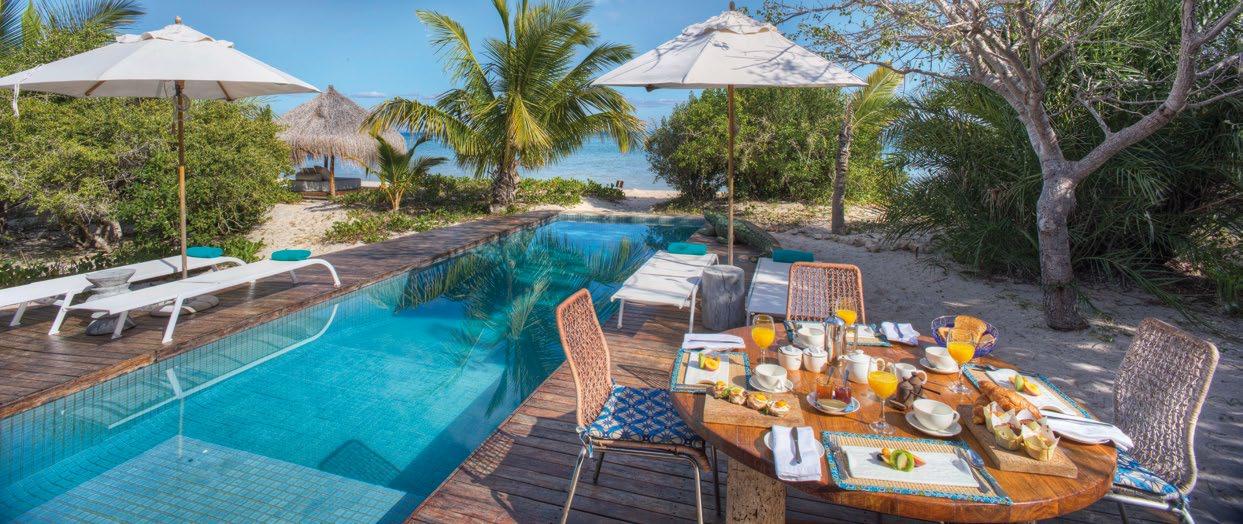
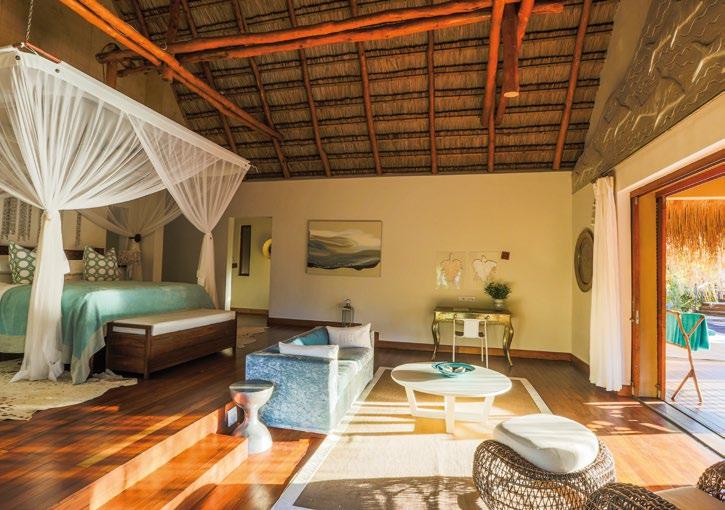
The Presidential Villa at Azura has been described as one of the best villas anywhere in the Indian Ocean.
Several different zones have been created for visitor’s enjoyment and relaxation: from the comfortable lounge area to the vibey Star Bar, and our fabulous wine cellar offering a selection of the owners’ wines, especially flown in from their château in France. The Jellyfish Restaurant offers breakfast and more formal dining. A boutique at reception, and our Padi 5 Star dive centre with top of the range scuba pro equipment are also at hand.
Azura Benguerra Island is paradise found.
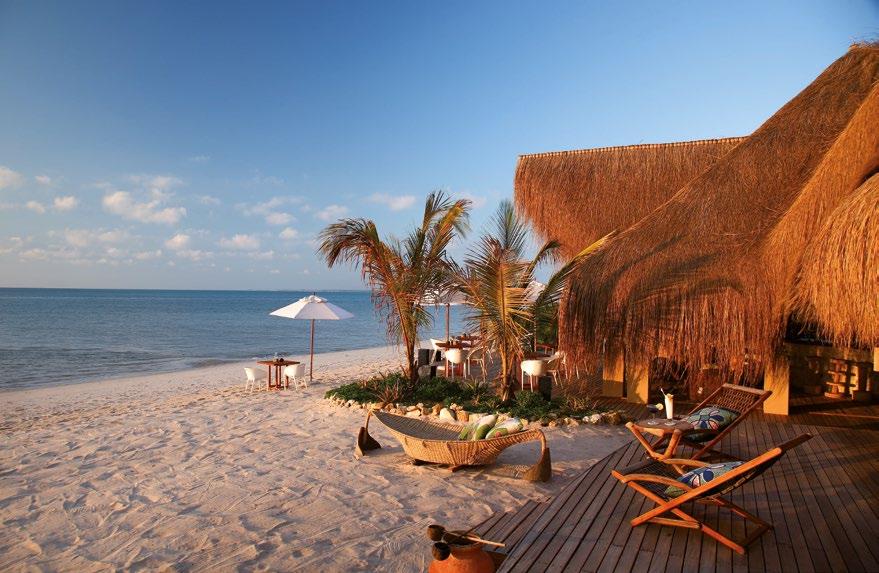

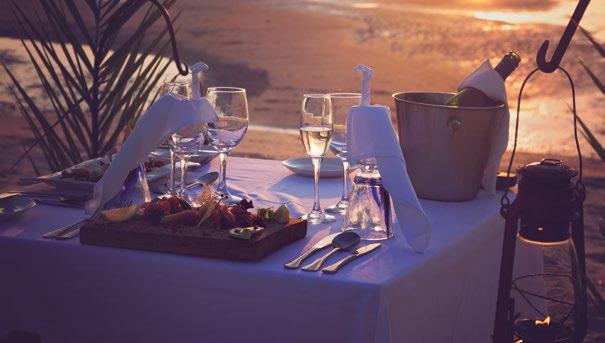
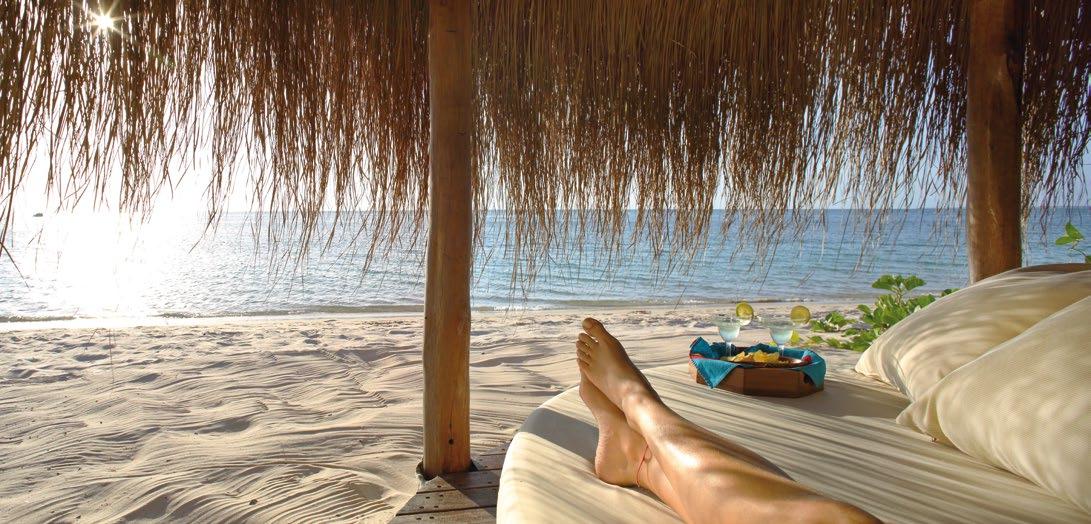
Dinner on the beach.
Just 20 villas are nestled along one of the last undiscovered stretches of beach in the world, with all the comforts you could wish for: sparkling private pools, Mozambican butler-hosts to look after your every need, fish, and seafood fresh from the ocean, a fantastic range of activities and experiences, an African spa to relax in, all part of a community-based project where the local islanders benefit as much as you. Azura Benguerra Island is paradise found. ♦
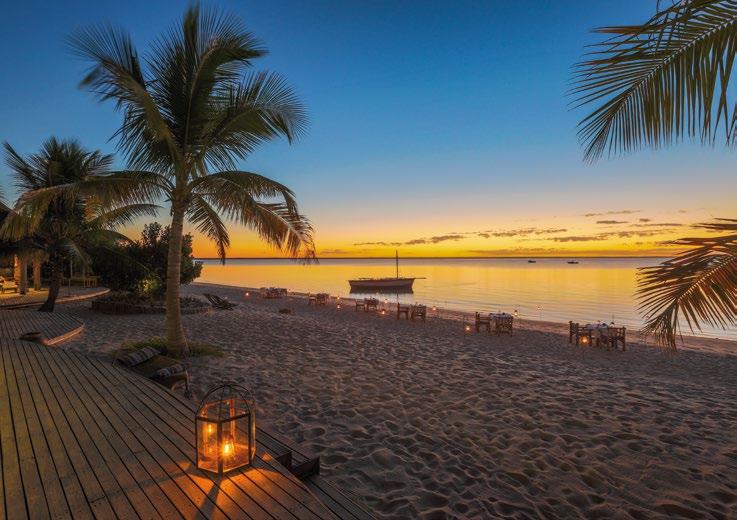
For more information and to make a booking: Email: reservations@azura-retreats.com | Mobile: +27 (0)76 705 0599 | www.azura-retreats.com | azuraretreats
MADAGASCAR

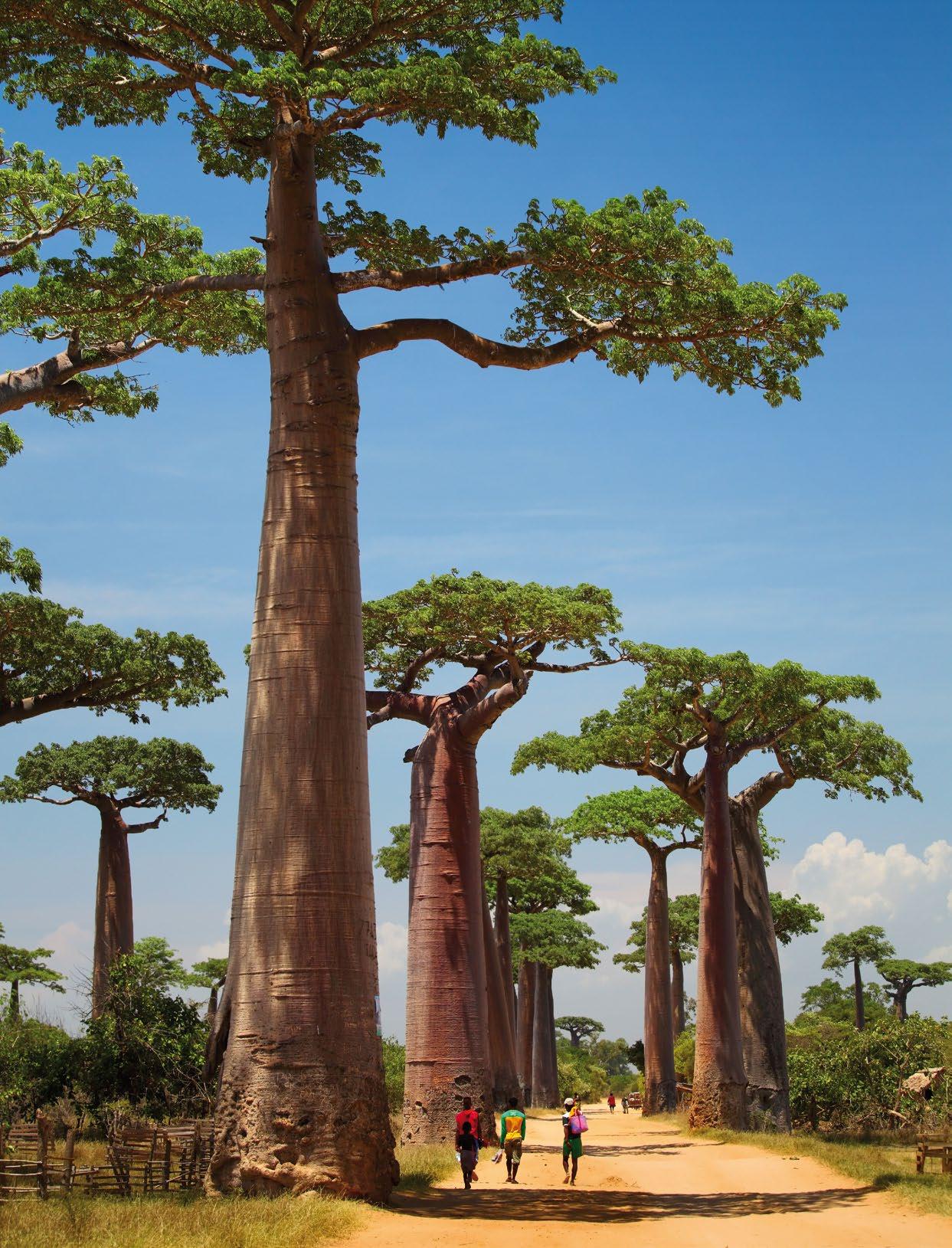
The Republic of Madagascar, previously known as the
Malagasy Republic, is an island country in the Indian Ocean, approximately 400 km off the coast of East Africa. At 592,800 square kilometres, Madagascar is the world's second-largest island country.
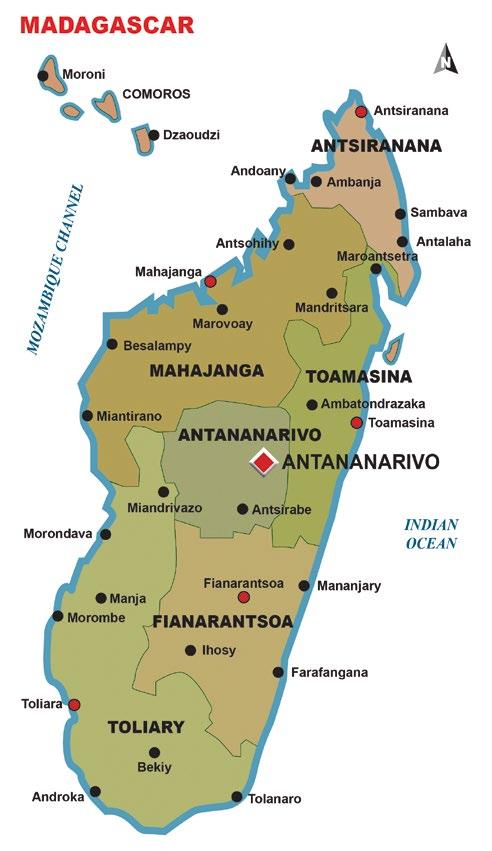
Madagascar is located in the southwestern Indian Ocean and is separated from the African coast by the 400 km-wide (250 mile-) Mozambique Channel.
The people of Madagascar do not consider themselves to be Africans but, because of the continuing bond with France that resulted from former colonial rule, the island developed political, economic, and cultural links with the French-speaking countries of western Africa. As a result of the historical bond with France, the official languages are Malagasy and French. The 2020 estimated total population is 26 521 000.
The animal life and vegetation of the island are equally anomalous, differing greatly from that of nearby Africa and being in many respects unique. Although the coastlands have been known to Europeans for more than 400 years and to Arabs for much longer, recent historical development has been more intense and concentrated in the central plateau, which contains the capital city of Antananarivo (formerly Tananarive). ♦
THE LAND OF THE FORGOTTEN SEA
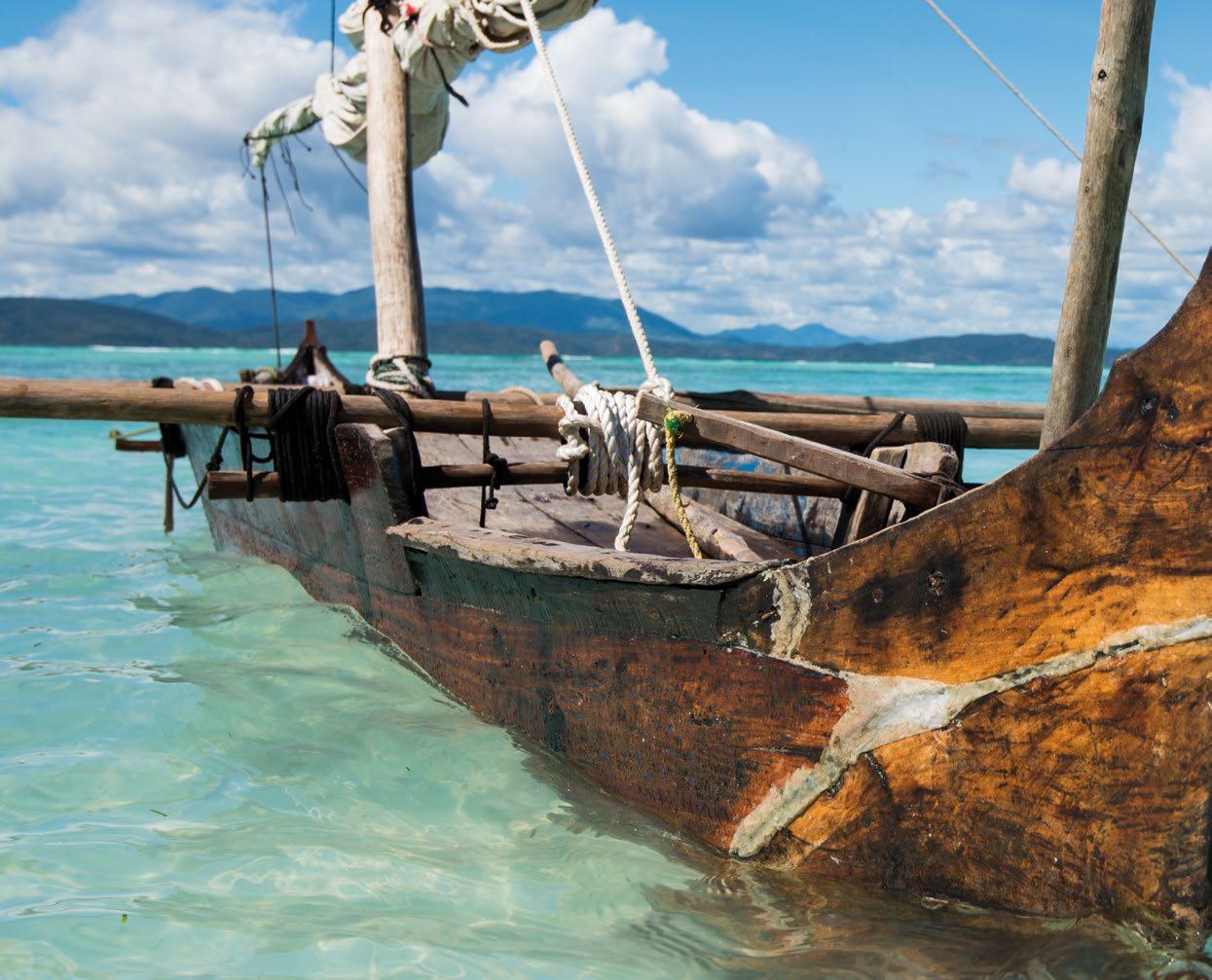
The dugout: the ancient means of transport for Madagascar. Photo © SGAR
Once joined to Africa and India more
than 150 million years ago, Madagascar broke away as the continents drifted apart. Madagascar gained its nickname, the ‘eighth continent’, as it evolved independently of the rest of the world.
Over 85% of its plants and animals exist nowhere else on Earth.
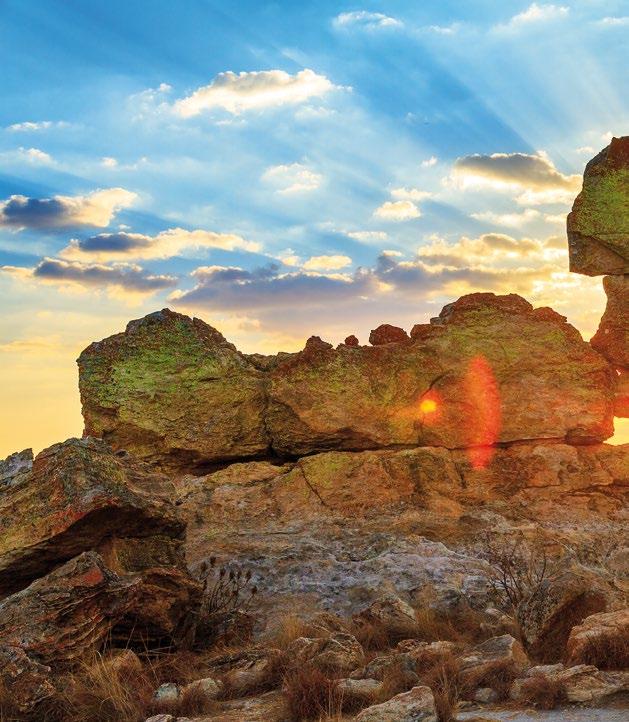
One of the most magical places on Earth, Madagascar is an island defined by its rarity.

This is nature’s untamed frontier, a place where all that is wild reign supreme.
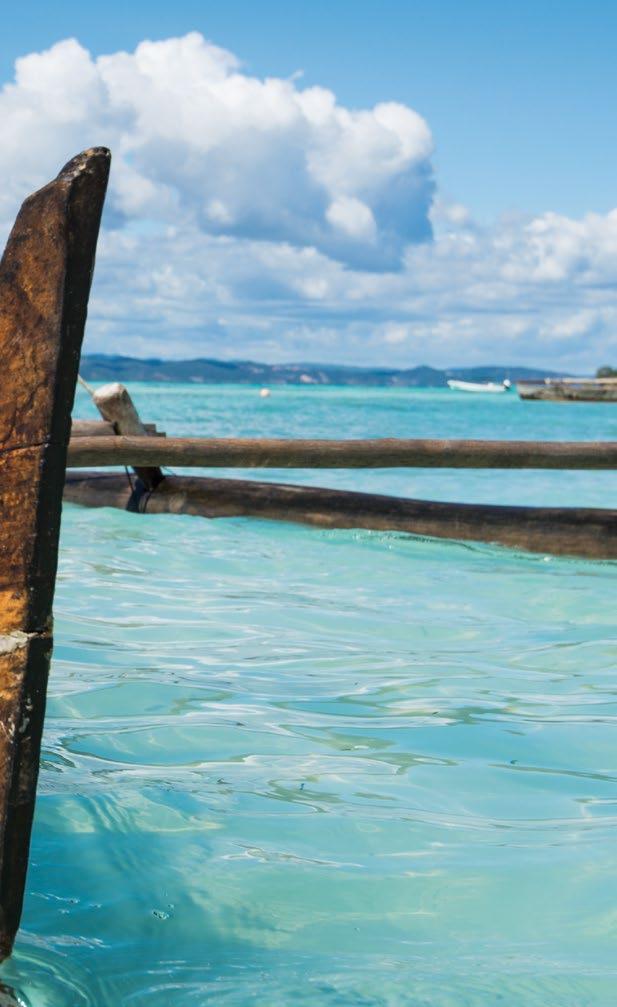
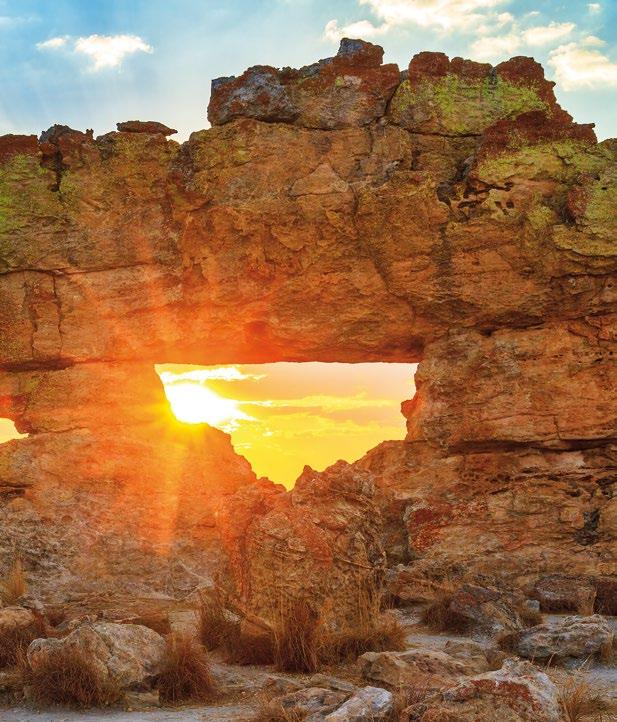
Coral Reefs of Southwest Madagascar. NASA image created by Jesse Allen, Earth Observatory
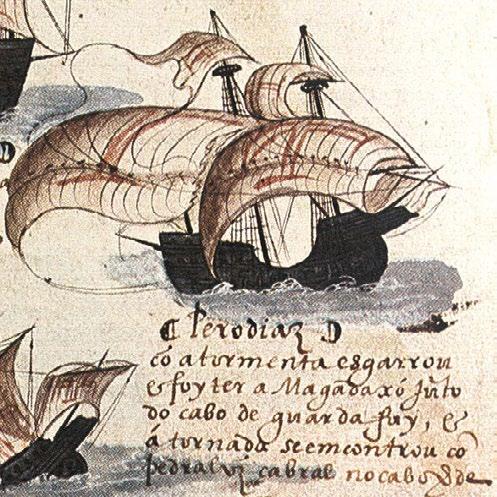
European contact began in 1500 when Portuguese explorer Diogo Dias recorded the island while participating in the 2nd Portuguese India Armadas.
Antanaarivo City. Photo © Ekix
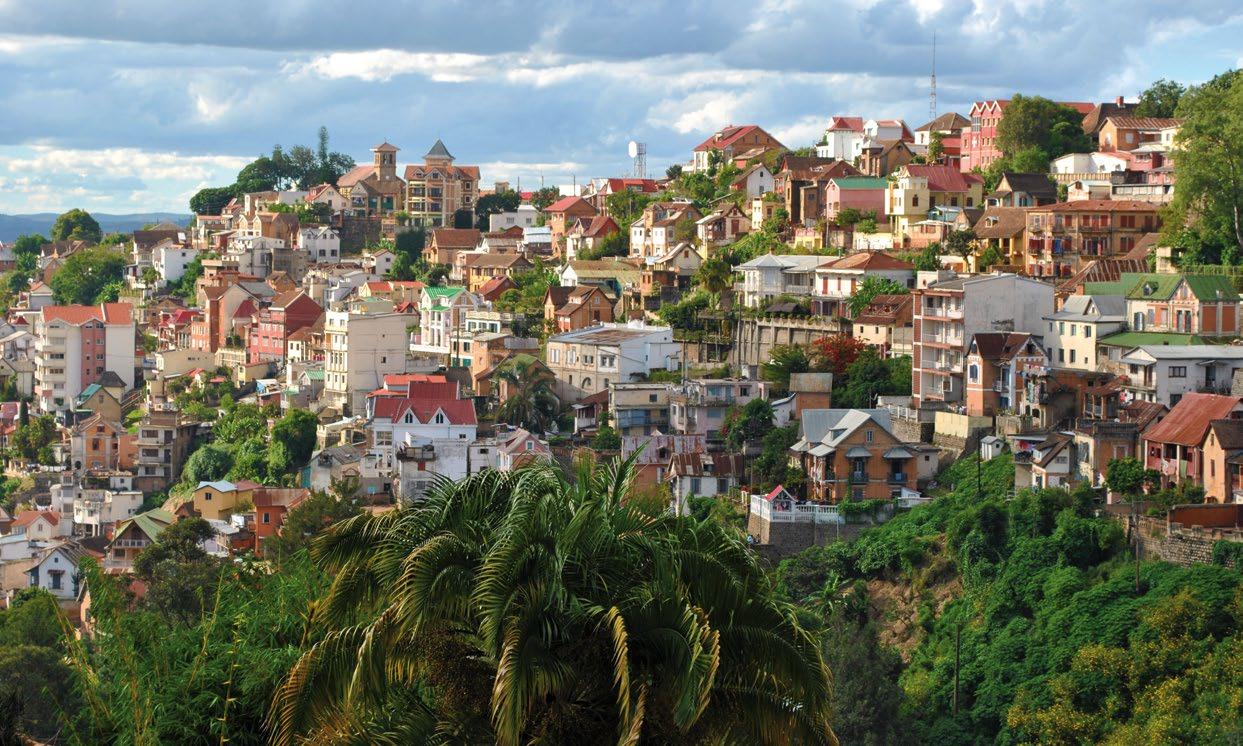
From a land where tribal kingdoms were in full force and pirates ruled the sea, to a layover hub for European explorers and Arab traders, Madagascar’s rich multicultured history has been cultivated and contributed to by each passer-by. While travelling through the country, you will pass through different worlds with aesthetics of familiar places everywhere you go. Observe something of a Provençal village with rust-coloured farmhouses and tall colonial roofs as you travel along the mountainous highway through the capital, Antananarivo to Andasibe. The remnants of a French influence with a Southern African and Indonesian twist pervade the surroundings.
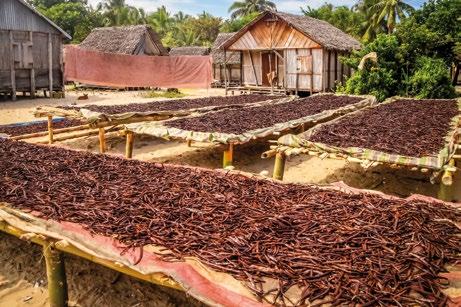
Vanilla drying in a village. Photo © Pav-pro Photographic Face paint. Photo © Kriss75
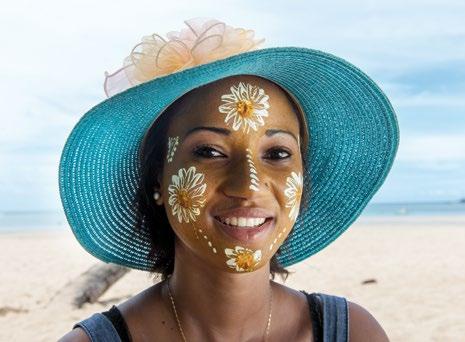
Travel further to a place of ox carts and villages right out of rural South East Asia and notice how the Masonjoany face paint of the women of Morondava reminds you of the famous Thanaka paste of the women of Burma. This is not for lack of originality, but a reflection of the layers of history and foreign cultures of the island. Look closer and you will see that everything that appears familiar is anything but. The people of Madagascar answer the question of their origin, despite their proximity to Africa, by declaring they are not African, they are Malagasy - an amalgamation of African, Asian, Arab, and Indian cultures that has created who they are today.
Rice terraces and Merina villages along the National Route 7 (RN7) south of Tananarivo. Photo © Luis
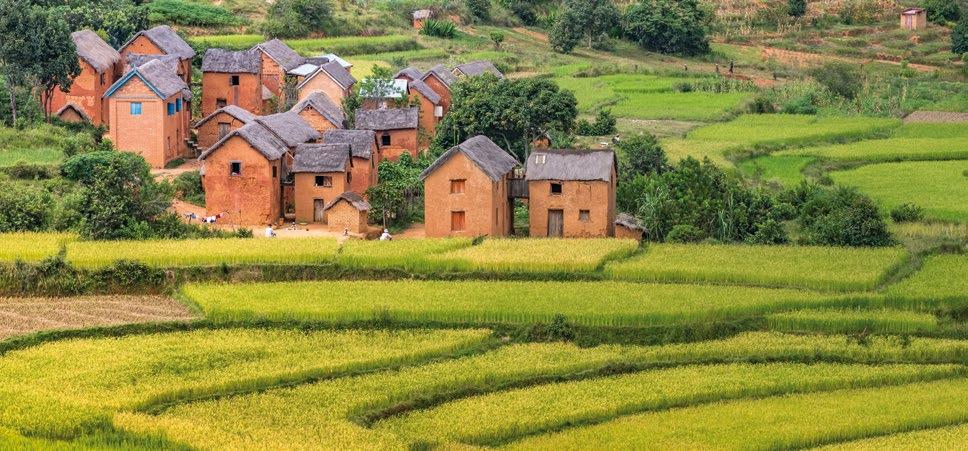
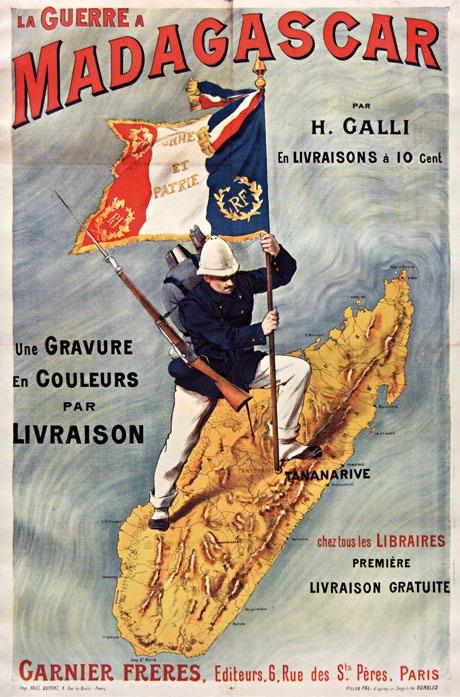
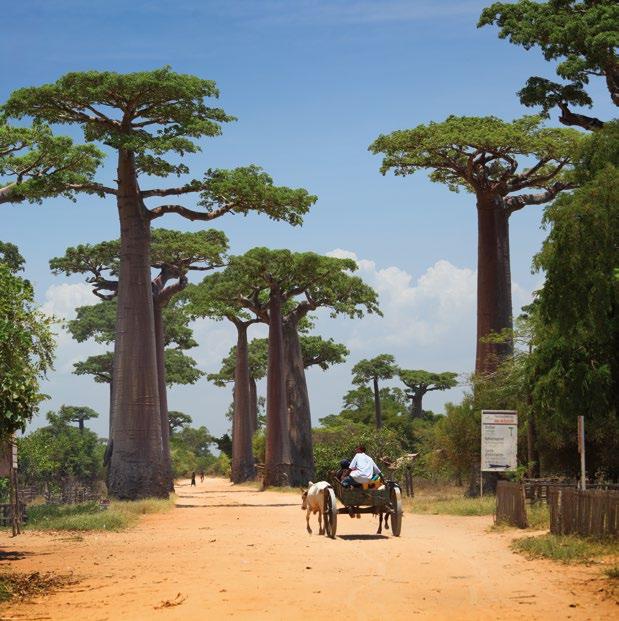
Baobab trees. Photo © Didarev Mikhail
No two areas of Madagascar are the same and each has its own unique quirks and characteristics, biodiversity and wildlife. The west coast village of Morondava boasts the Avenue of the Baobabs, known by the Malagasy as “roots of the sky”. The eastern forest of the Andasibe-Mantadia National Park is home to the Indri, the largest lemur species found on the island, famous for its haunting call. Travel further north to find white sand and azure seas that give way to endless stretches of rice fields, forests, and long dirt paths of electric orange earth. Here you will find plantations producing up to half of the world’s vanilla.
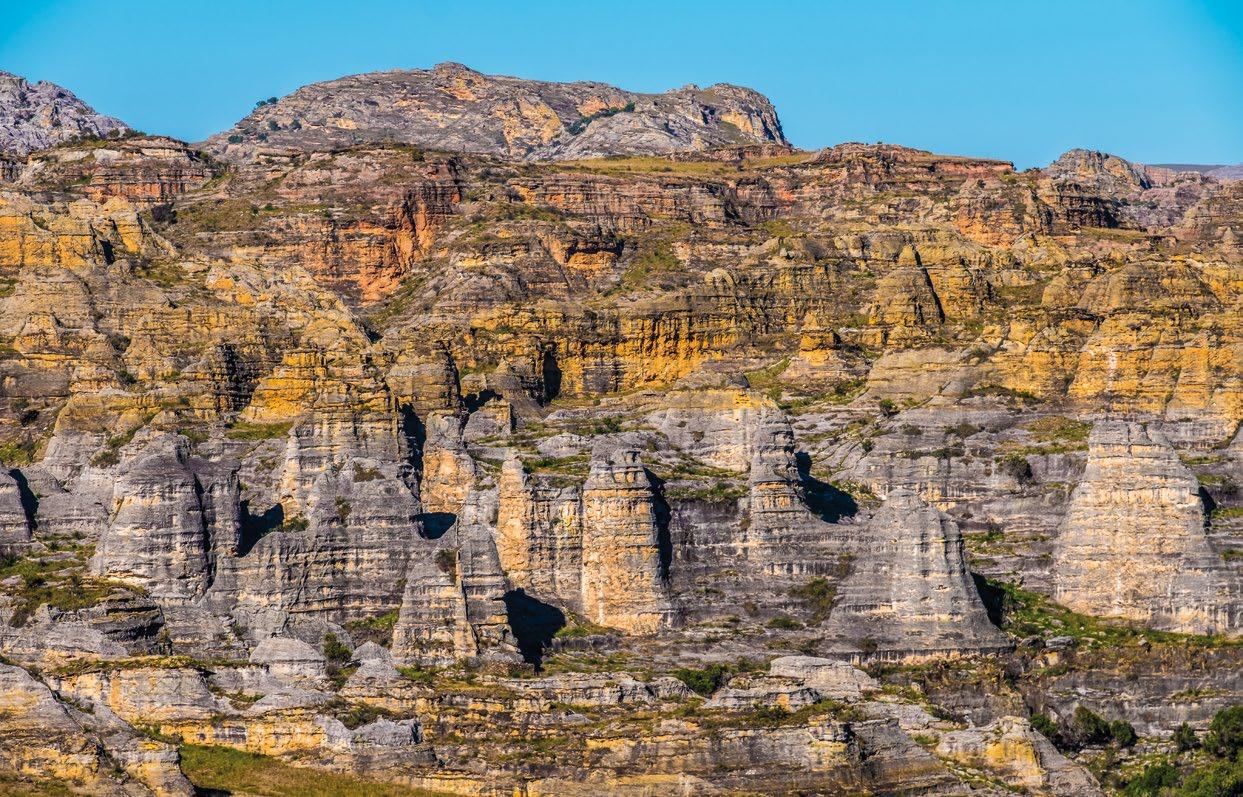
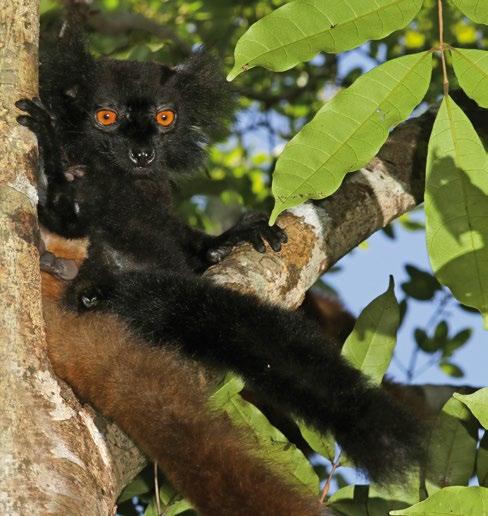
Black lemur (Eulemur macaco) male. Photo © Charles James Sharp Black lemur female. Photo © Charles James Sharp

Endangered black lemurs have a habit of picking up and biting at toxic millipedes. The toxins are usually not fatal to the lemurs and they try to stimulate the millipede to release its toxins in selfdefense. Once this is achieved the black lemur will rub the millipede around its body to get the toxins on its fur. It is believed that they do this to help repel insects with the millipede’s poison.
Scan the QR Code or visit https://youtu.be/aoBDyEPCmTc to watch the documentary, ‘Madagascar - Wildlife and Green Treasures of the Red Island’. Produced by wocomoWILDLIFE.
Madagascan fish eagle (Haliaeetus vociferoides) Photo © Gary and Donna Brewer

In the early 1980s, several researchers claimed the species had undergone a “violent decline during the last 50 years” and the species was subsequently listed by IUCN as ‘threatened’ in 1988, and then later upgraded to ‘critically endangered’ in 1994.
Ring-tailed lemur (Lemur catta). Photo © Marcella Miriello
Panther chameleon (Furcifer pardalis). Photo © Jan

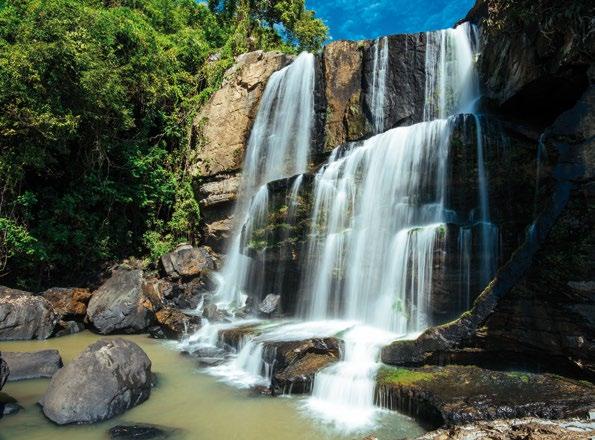
Waterfalls. Photo © Alex
The panther chameleon was first described by French naturalist Georges Cuvier in 1829. Its generic name (Furcifer) is derived from the Latin root furci meaning "forked" and refers to the shape of the animal's feet. The specific name pardalis refers to the animals' markings, as it is Latin for "leopard" or "spotted like a panther".
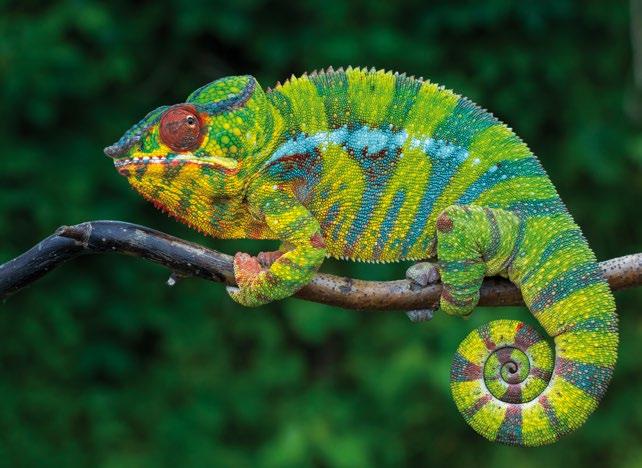
Further off the north-east coast, situated on a remote island, Miavana, Time + Tide’s exclusive island escape offers the luxury of privacy, time, and space and a world of exploration at your fingertips.
Miavana is one of the pioneering resorts collaborating with the island and its people to showcase and preserve Madagascar’s natural wonders for generations to come.
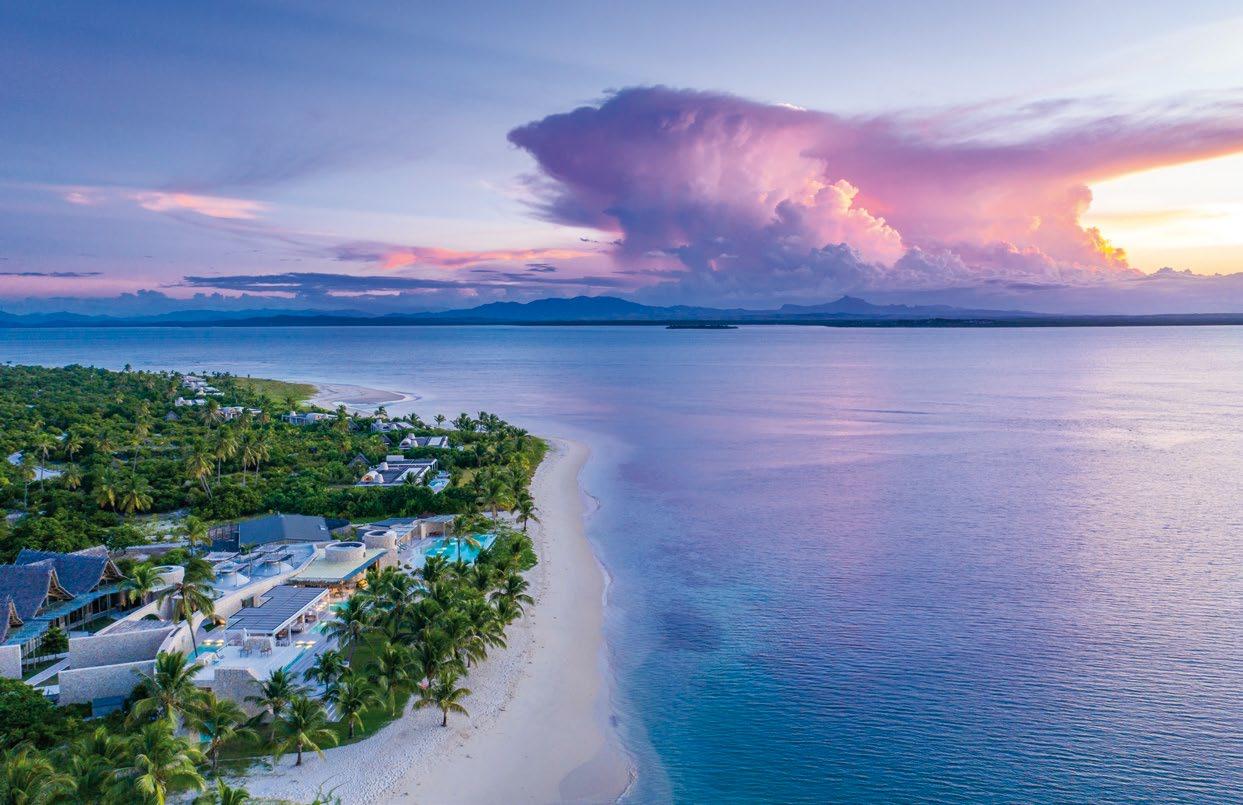
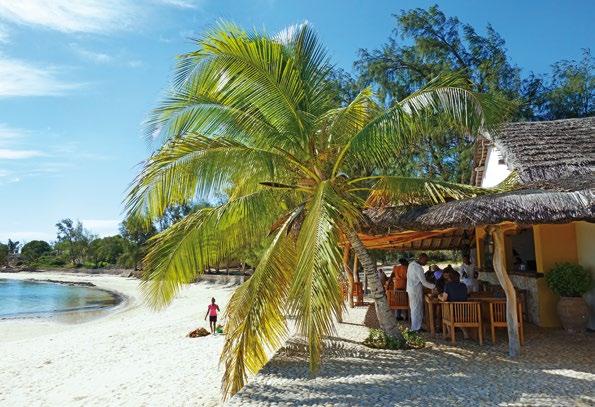

On the beach. Photo © Pixel Theatre Deep sea fishing. Photo © Sablin
A 30-minute helicopter ride from the closest town, Diego Suarez, will introduce you to Madagascar from the sky as you journey over mountains, baobabs and shipwrecks dotting the wild coastline. Take in the seascape whilst keeping an eye out for turtles, whales, and dolphins and before you know it you will have touched down gently on the shores of Miavana. Read more on page 96.
Dhows quay. Photo © Louloua Asgaraly
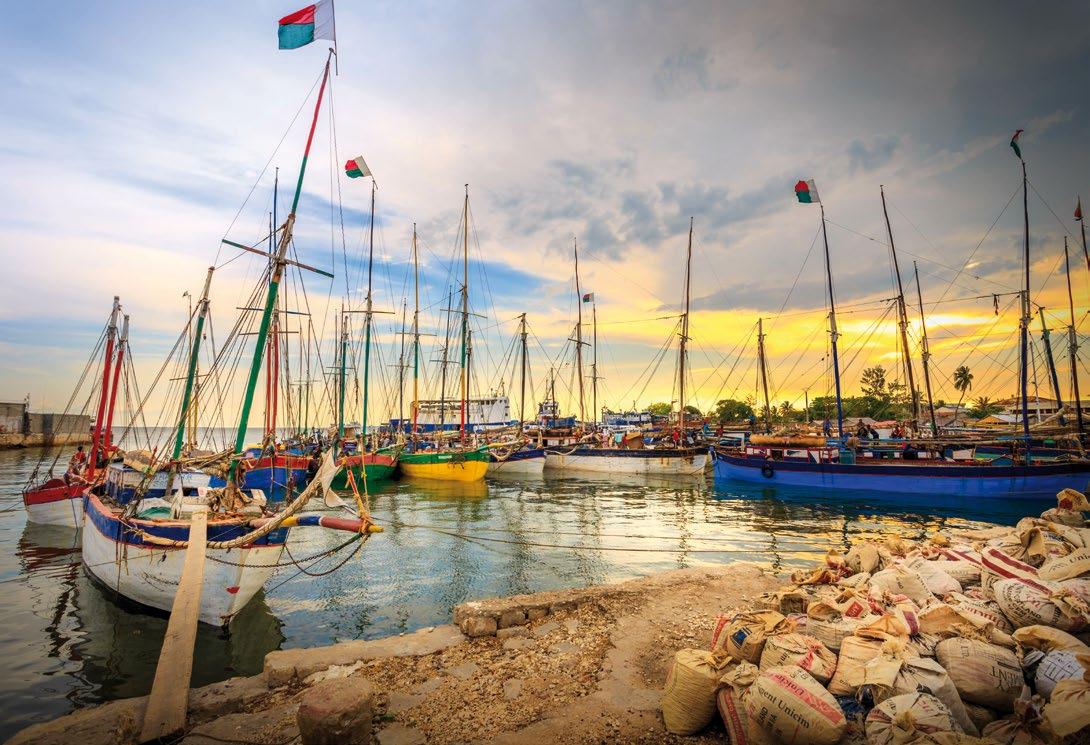
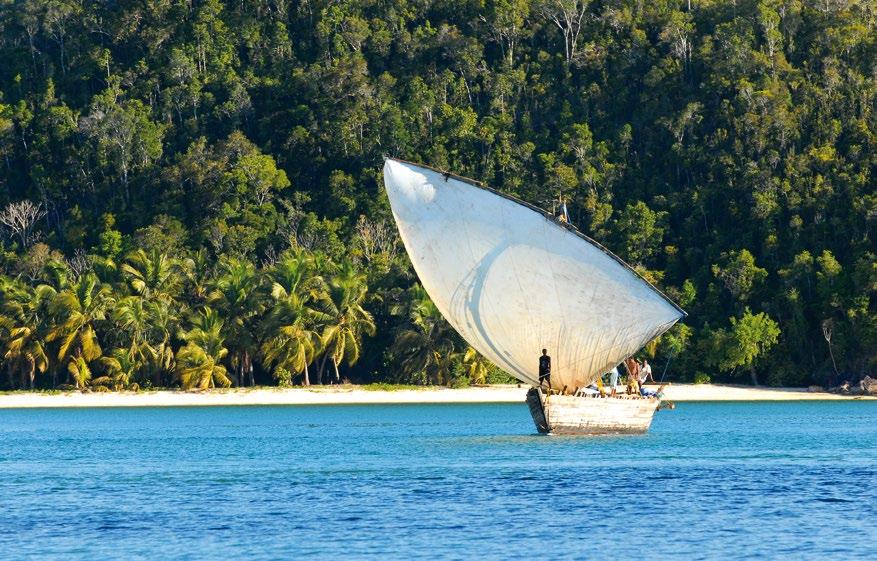
Sailboat at Boutre, Madagascar. Photo © Baizeau Lionel
Visit the island family of crowned lemurs waiting for you in the forests, watch chameleons slowly strut across bike paths, witness turtle hatchlings scurry to the sea and observe nesting terns, the largest seabird colony in the Indian ocean, on the neighbouring island Nosy Manamphao. Intrepid explorers searching for more can embark on helicopter excursions to the mainland to visit families of lemurs, including the critically endangered black lemur, or explore the caves of Madagascar and visit the famed Tsingy formations at Ankarana reserve. ♦
MIAVANA
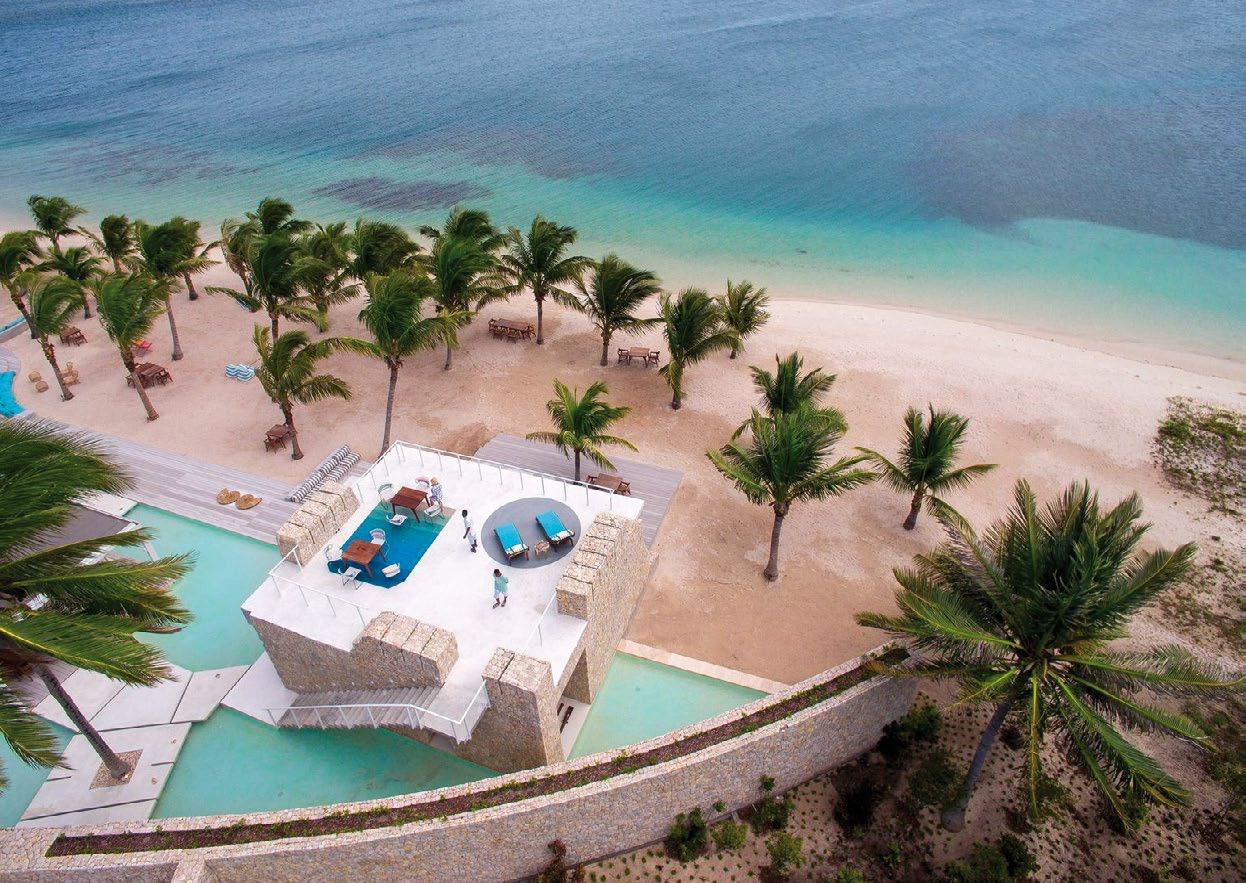
THE ULTIMATE EXCLUSIVE LUXURY ESCAPE
Built on a foundation of conservation,
Miavana is committed to long-term sustainability and boasts ultra-luxe and sophisticated island living whilst staying true to its green roots.
14 One, two and three-bedroom villas - masterpieces of castaway luxury - are dotted along the pristine shore. Each has a private pool, butler service and direct access to the beach. Designed for space and privacy, with a family in mind – this is the perfect home away from home. Miavana’s centrepiece, the main piazza, offers endless dining opportunities, an infinity pool overlooking the Indian Ocean and its own natural history collection consisting of Madagascan artefacts collected over years.

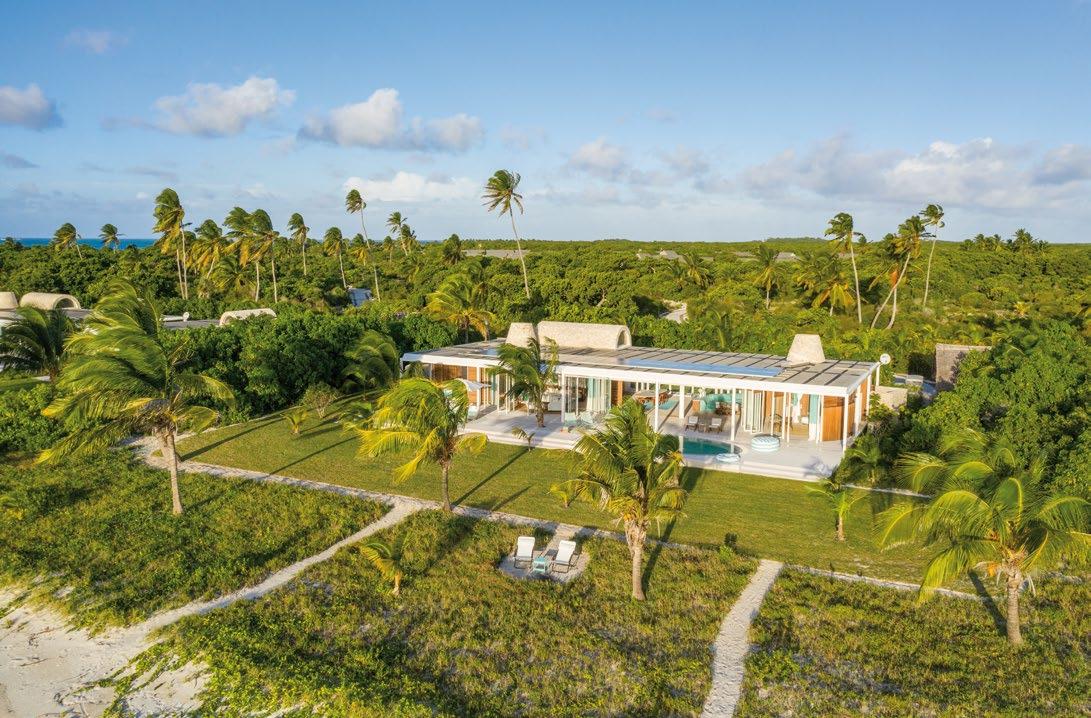
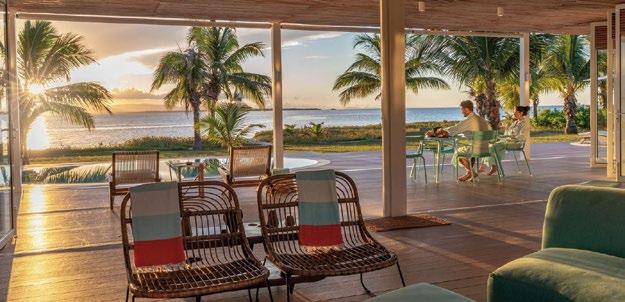
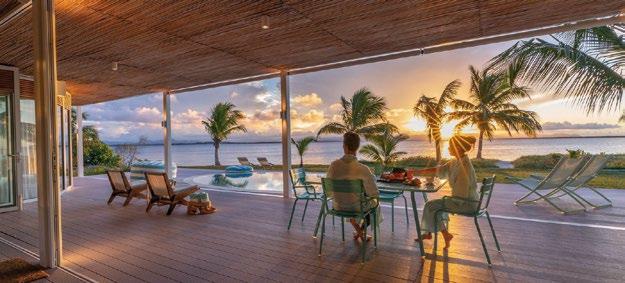
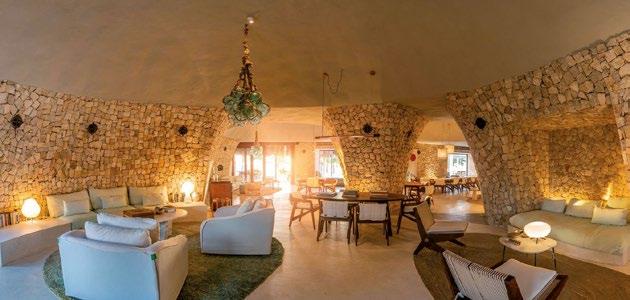
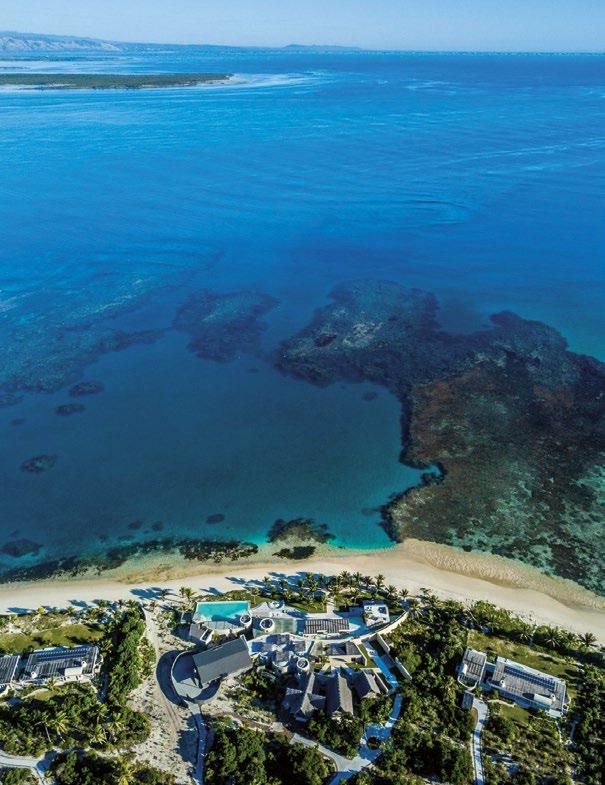
Scan the QR code or visit https://vimeo.com/339342571 to watch the video ‘Time + Tide Miavana: A 60 second Journey’. Published by Nosy Ankao
Uuntouched beaches and coral reefs...
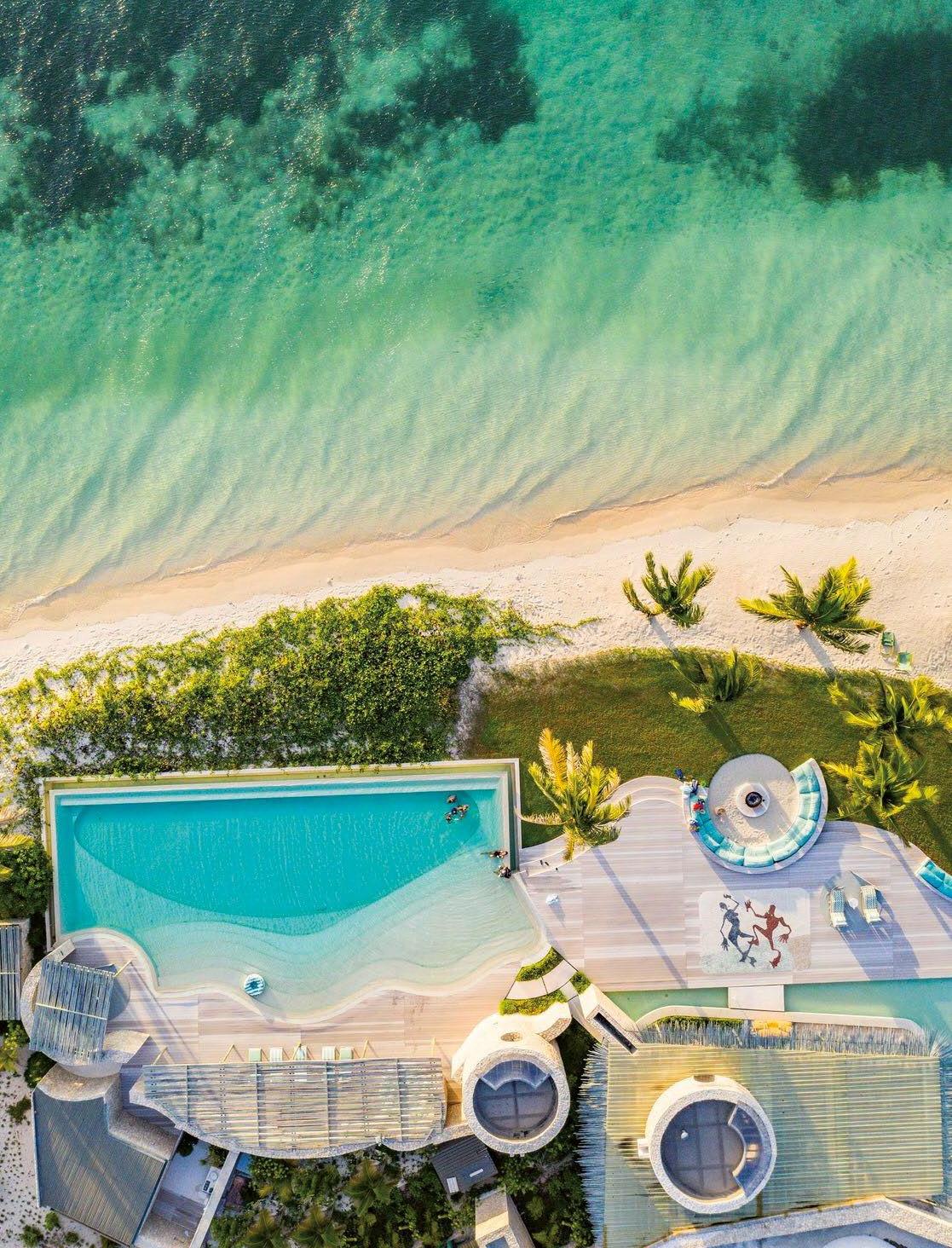

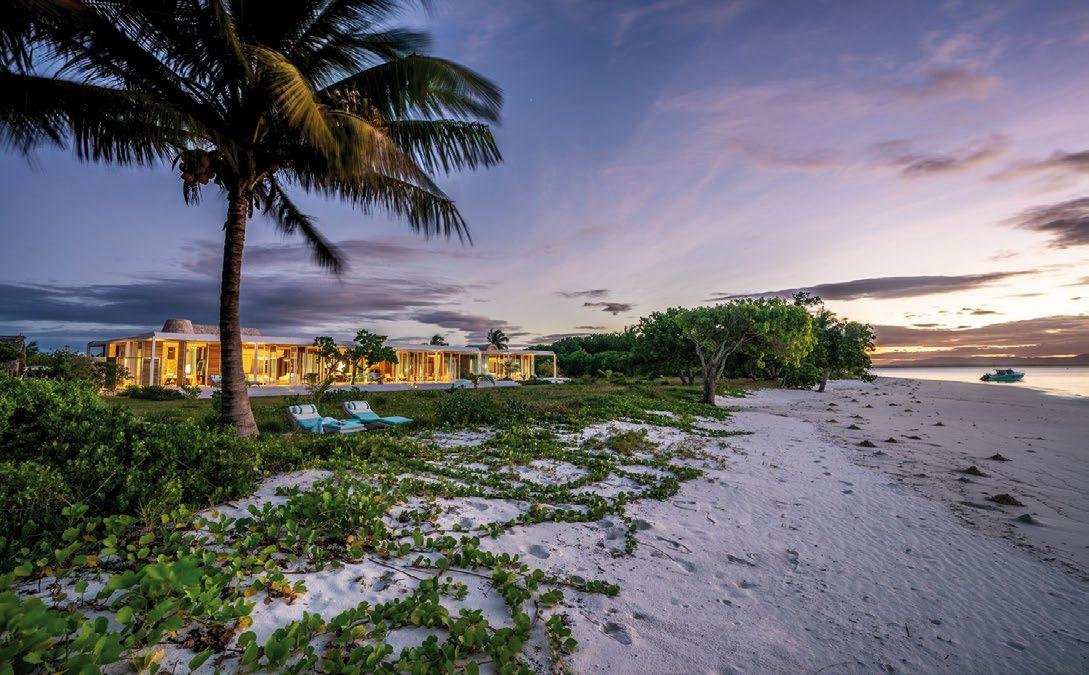
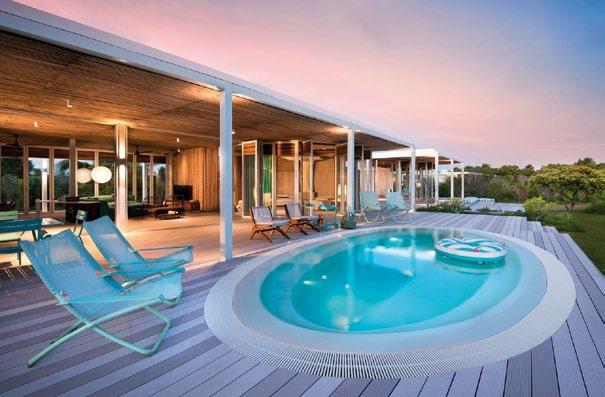
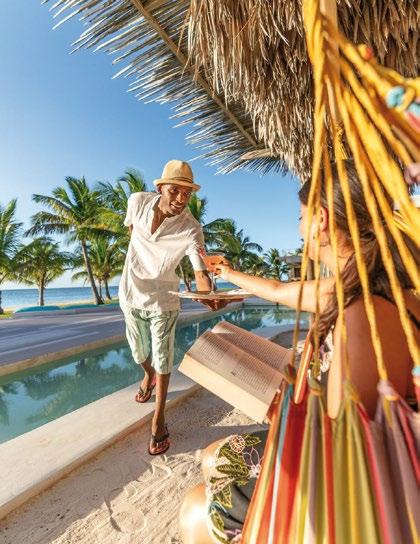
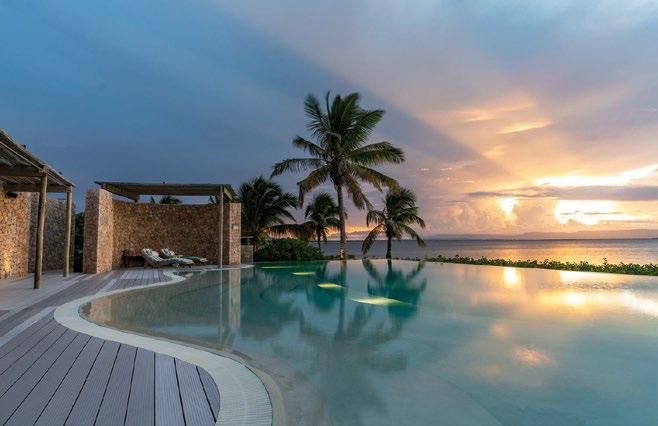
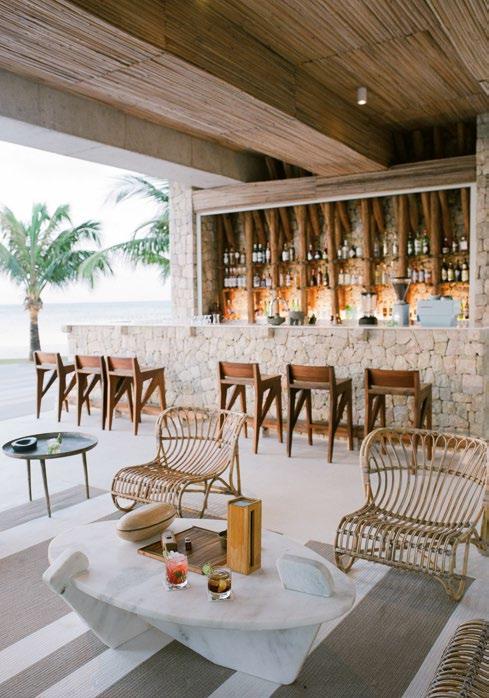
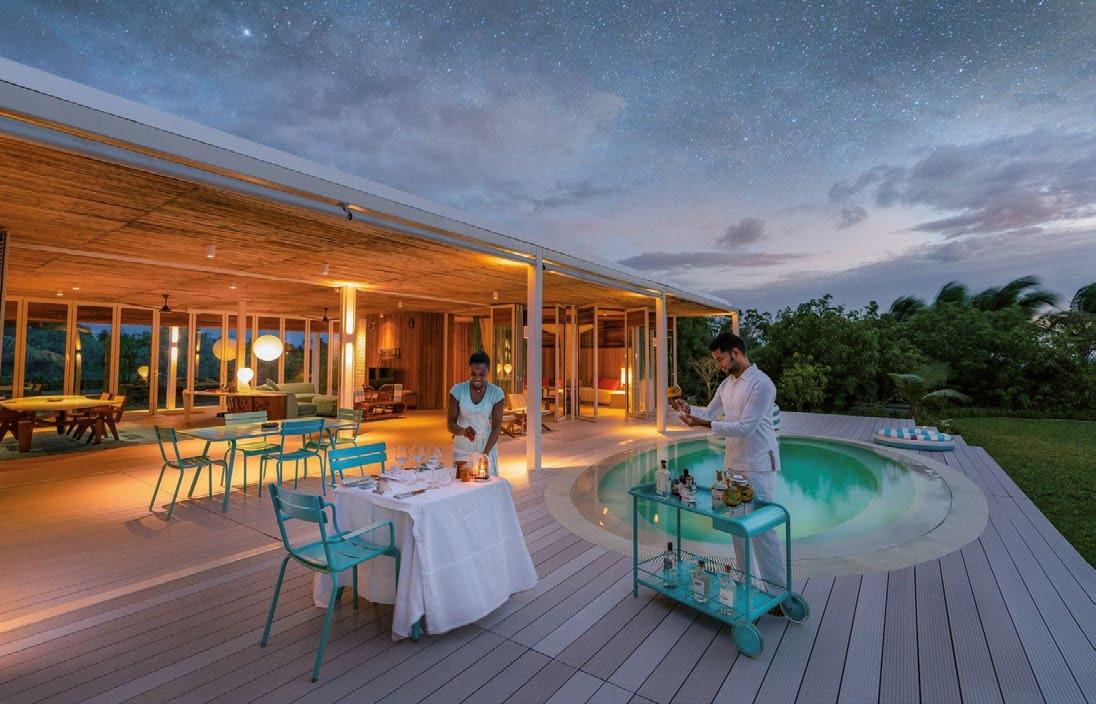
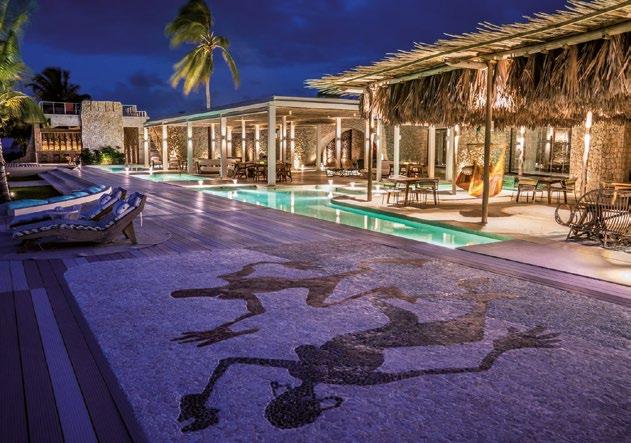
Surrounded by untouched beaches and coral reefs, the island is ideal for barefoot luxury, divers, deep sea fishing experiences and adventure seekers. Whether you are on a family holiday, romantic honeymoon, solo mission or simply working from home - this intimate haven is just the place to escape, unwind and explore. Rediscover your sense of wonder where luxury means setting foot where few men have before. ♦
For more information and to make a booking: Email: travel@timeandtideafrica.com | www.timeandtideafrica.com






